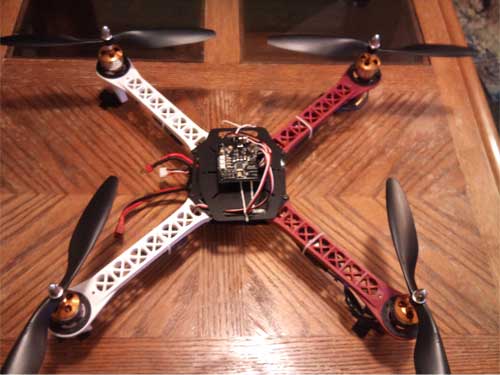Autonomous Quadcopter Design & Information

For ELEC399, the goal was to have our quadcopter take off, rise, fly sideways and land safely. From there, we have many practical ideas to continue in ELEC499, starting with attaching a camera to the quadcopter. With an attached camera, we could have the quadcopter do many things, such as be a video-tour guide with a live stream. Furthermore, another practical idea would be having a loudspeaker on the quadcopter, and using it as an automated tour guide- perhaps in a museum setting to allow visitors to explore exhibits without a human guide. As described in our Final Report we were slowed along with way with numerous unexpected issues with the equipment, not allowing us to fully reach our term goals. In the end, we did not have time to configure the gyros, and as such could only work with the motors. At the end of the term, we were able to get the copter to autonomously take off and land if we used guide wires (as seen on our media page).
The quadcopter was purchased and assembled by our supervising team of Dr. Fayez Gebali and Dr. Haytham Elmiligi. Using an Atmel microcontroller, the ATmega168PA, we had to research the chips Pulse-Width output used to run the motors, and write a C program to accelerate and decelerate the motors. The four brushless motors were attached to four 25-amp speedcontrollers, purchased from China. For an in-depth account of how these were coded to properly arm and control the motors, please refer to the Final Report.
For pictures and videos of quadcopter, including flight video, please visit the Media page.